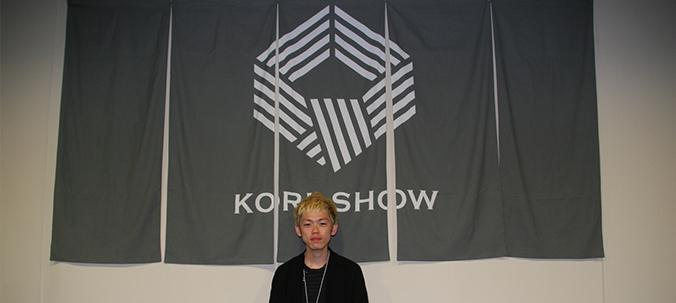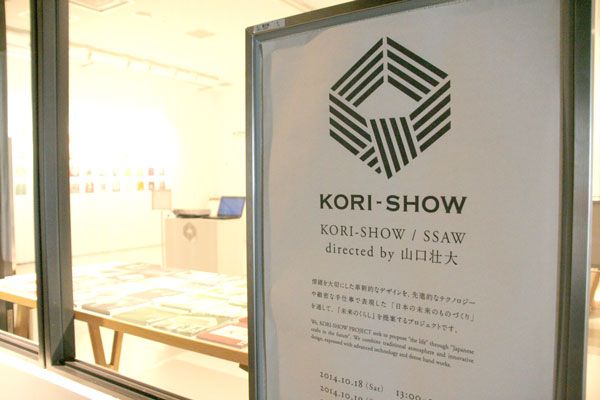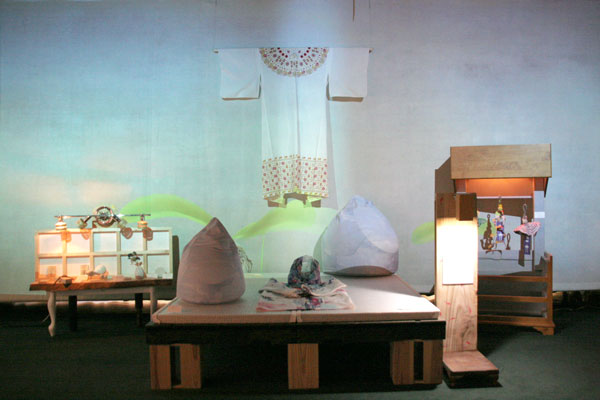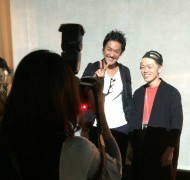KORI-SHOW
Stylist, Fashion Director
Born in 1982 in Tokoname City, Aichi Prefecture. Graduated from Bunka Fashion College. Opened MIKIRI HASSIN in March 2006 in a building that was a mixed-tenant building prior to WWII. Moved the store to Harajuku’s Cat Street in January, 2009 where it remains today. Started working as a stylist in 2006. Provide styling services for culture, mode and street magazines, as well as advertisements, CD covers and PV.
[ URL ] KORI-SHOW http://kori-show.com/
“KORI-SHOW” – The lifestyle brand that made a debut in Paris in February 2014. This is a project that proposes “futuristic living” through “Future Creations of Japan” together with the manufacturers, craftsmen as well as the young and energetic designers in Japan. In October 2014, during the Mercedes-Benz Fashion Week TOKYO 2015 S/S session at Shibuya Hikarie 8F COURT / CUBE the collection was presented in Japan for the first time. With “Saijiki (glossary of seasonal terms for Haiku composers)” as the theme, along with images by “teamLab“, which is an Ultra-technologists Group, and a spatial presentation by magma, which is a creative unit, numerous types of creations resulting from interweaving advanced technology and the handwork of craftsmen were introduced for the first time. Manufacturers such as Kyuca, HINAYA Inc. , KUNIEDA Co. Ltd., ARTLAND Inc. , KITA-BOSHI PENCIL CO., LTD , KAYTAY TEXINNO INC. , Toho, Matarodoll co., ltd. , TAKADA SHIKI SEISAKUJYO made presentations and designers such as hatra , Eatable of Many Orders , Knitting bird , MOTO , S. NAKABA are participating in the project. We talked with Souta Yamaguchi, Creative Director of KORI-SHOW about the recent triumphant Trade Show, the creative team and about creations in Japan.
How was the response to the Installation in Paris, France in February 2013, which was your debut, and the show in Frankfurt, Germany immediately thereafter?
The one in Paris was our very first presentation. It was a solo exhibition. The venue “Shangri-La Hotel Paris” is said to have been used as a dining room by the nephew of Napoleon and a hint of the Western European lifestyle still lingers in the room. And there, since we set up an installation such that one would bump into creations that have an Eastern background so to speak, the story became more interesting and stood out. Different elements were mixed and matched exquisitely in the presentation, and it turned out to be quite a friendly but unique room. We received a good response from the European people as well. In Frankfurt we presented at the lifestyle trade fair called Ambiente. At Ambiente we tried to display the products more visibly. We set up a kotatsu (Japanese foot warmer) right in the middle of the space that was about 8 mats. Although they don’t have the custom of removing shoes, the visitors removed their shoes to enter the kotatsu one after another and lot of people gathered in the booth. Our installation turned out to be quite interesting. The response was good. We received requests from local interior related stores for leasing the kotatsu as well. We had a successful installation. The next challenge is to clear the formalities related to export and to turn these requests into numbers.
This was your first presentation in Japan. How was the response?
There have been inquiries from fashion buildings and department stores. I think we have received a good response.
The kotatsu has been a popular topic especially on the internet, and is being shown in several TV programs as well. I think our popularity has been proved.
As far as our proposed method of presentation is concerned, in the future we want to expand and further develop the concept of product oriented presentation. Without removing the filter for fashion, we would like our presentation to focus more on products.
Please tell us more about the background of why “Saijiki” was chosen as the theme this time.
Although globalization is being advocated these days, localization is a popular topic as well, so we thought “Saijiki” would be the most effective theme for presentation in terms of what Japan means to the rest of the world, as also what countryside means to Tokyo.
Also, since digital and physical inter-relation is a domain that has particular concern for us, at the booth we would like to present how one could spend future “Saijiki” as well.
How was each product created? Tell us more about the work-flow.
The participating companies that would be responsible for the production background were finalized first. The image of the kind of installation we would like to do, developed from there on. And then accordingly we worked out the creations that would help us turn the installation that we had in mind into a reality. The scale perception of the companies, the differences in common practices among different industries – bridging such “gaps” was a great deal of struggle. But all said and done, creation is after all in the hands of the persons in charge of the actual site. We want to deal with individuals who have the right mindset irrespective of the size of their company.
How do you think this trade show would help in your future development?
Please tell us about the images by teamLab and the spatial presentation by magma.
The images by teamLab totally matched our concept. Since they very well know the appeal of converting real into digital and then savoring it when it is brought back into real, we couldn’t think of anyone other than teamLab for setting the image of our space. We had requested magma that we wanted to bring out a sense of fusion in which the Eastern and Wester cultures would be blended. With flat shades of color they brought out a sense of unity, while using a mix of various cultures as the background for the furniture and fixtures respectively. I think it matched the images by teamLab, and also with the sense or feeling of blending in while moving away that I had imagined.
Tell us about the designer group NO DESIGN that was part of the KORI-SHOW team.
Masaya Muto, representative of NO DESIGN, who was in-charge, aspires to achieve “Designs that are not designed”. I think he is an unprecedented designer who can boldly but simply express the essence of things. This time, even as we presented a concept with a cultural background or history, at a glance, there was bold graphic representation that instinctively appealed to the customers.
What is meant by “Future creations of Japan”? Does it mean that artisans and designers would work closely in the future?
It refers to creations that take into consideration actual day-to-day life and integrate designs that value modern senses and yet preserve cultural background, and the technology and manufacturing process that is necessary to create those designs, while making equally excellent use of classic hand work and modern technology. To achieve this it is important that both parties are within close distance and we want to play the role of reducing the distances between them.
What are the future prospects of KORI-SHOW?
We intend to consult with the participating companies before we finalize our plan for the future. I think we need to draw up a scheme wherein production, the designers who come aboard and the project team, are all able to work together. We are eying the possibilities of overseas expansion; however, we cannot focus only on presentations. We need to see numbers accompanying them. For the time being, I believe, we need to chalk up a track record in Japan. And that is why we should not be concerned only about instantaneous sales in the near future. We need to take note of the creations that the participating companies have been coming up with and climb up one step at a time as a team, while being aware that this is a futuristic initiative.
|













